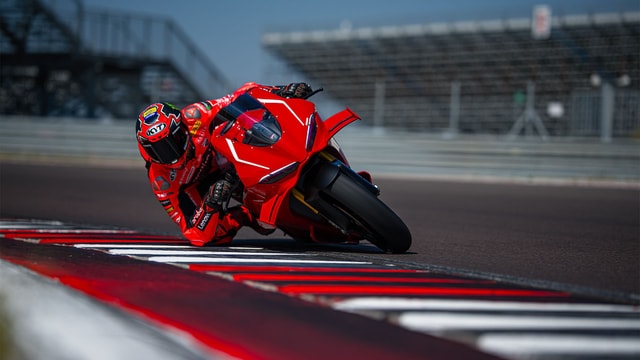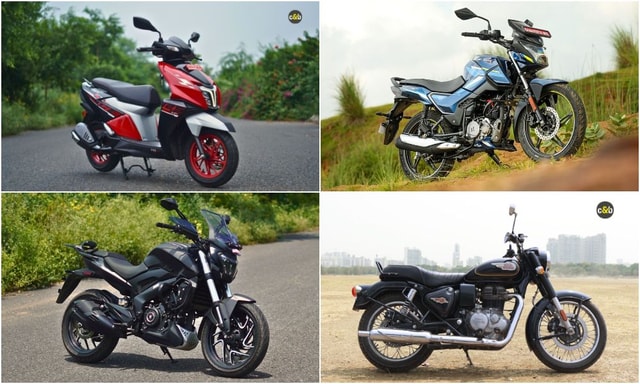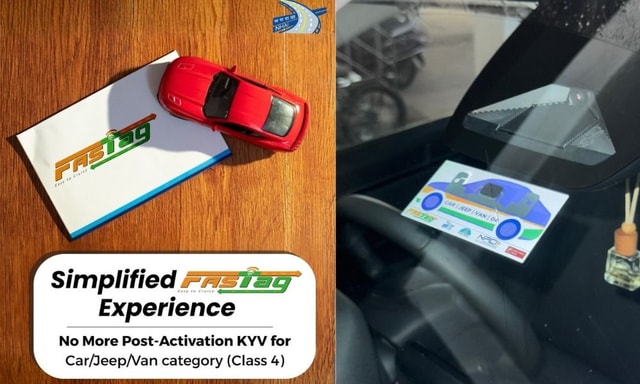F1 & AWS Unleash Start Analysis Insight To Show Viewers Who Is Fastest Off The Grid

- Smedley reveals that tool is broken under three buckets
- It checks for reaction time, 0-100 kph speed and exit speed
- Smedley says after a couple of races a clearer picture will come out
The 2012 F1 season was won by Sebastian Vettel during his all-conquering Red Bull years, but often people say it was Fernando Alonso's greatest year in F1 and he was more deserving of the world championship but was hobbled by an excruciatingly slow Ferrari. Somehow despite the handicap, he managed to stretch the world title battle to the final race. A big chunk of Alonso's success was hidden in his rocket starts, which catapulted him much further up than his qualifying position within the first lap itself. Alonso at the time was widely regarded and still perhaps so is regarded as one of the fastest starters in F1, but this notion was based on what we all saw on the television and what the end result was, but now what was happening inside the car.
Rob Smedley who was in the neighbouring garage as the chief race engineer of Alonso's teammate Filipe Massa, today is the lead engineer at F1 at Liberty Media and his team has worked with Amazon Web Services (AWS) on a new insight which debuted the recently concluded Turkish GP called - Start Analysis - which aims to expose the very same data that gave viewers the notion of Alonso's prodigious talent in a more data-centric way.
"So we quite often can see from a macroscopic view, the drivers who make a good start, and how they make a good start, where, kind of you sometimes get a feeling for whether or not they wheel spin or, or whatever and always the guys will get down to the first corner first and you know, find that hole in the traffic that that, you know, seems to suck them in. So this is a really exciting part of the Grand Prix this is as exciting as the qualifying absolutely because you've got 20 cars on the track and they're all streaming down to that first corner," said Rob Smedley in an exclusive interview with carandbike.com.
"Now, what we wanted to do was we wanted to get under the skin of that, so rather than just having this big, wide-open macroscopic view, and doing that from TV imagery, or understanding it from TV imagery, we wanted to get under the skin and look at the nought to 100 time so which is which is extensively the time that that's when all the actions start that's when the drive is really that's when they have a lot of concurrent actions going on," he added.
F1 and AWS have broken down "start analysis" under three buckets - Reaction time, initial acceleration phase and how fast the car and driver are at the latter part of the launch. The reaction time bit is quite self-explanatory and AWS Smedley reveals in the AWS blog, " the time from when the start lights go out to when the driver reacts by dropping the hand clutch to the mid (semi engaged/semi slipping) position."
Similarly, the initial acceleration phase deals with how a driver "handles the wheelspin, the throttle position, fully releasing the clutch paddle to full engagement, etc." And finally, there is the latter part of the launch which deals with "using the slipstream, the overall drag of the car, holding position (making a few changes of direction as possible), etc."

The former Williams and Ferrari engineer is now the lead engineer at F1 helping with F1 insights powered by AWS
But Smedley is quick to point out the data based solely on the Turkish GP will not be the correct barometer for judging on average who is the fastest starting driver in F1. To map out who it is, it will take data from a couple of races - ideally 4-5 races. He also is quick to point out that during the Turkish GP, due to the wet conditions, there was another element of variance. He also noted that the car in P2 will usually be the fastest off the grid because it gets the advantage of slipstream and less traffic at the same time. At times the car in P2 also gets a cleaner side of the track and it has less stressful braking zones.
"So really rather than kind of focus on who is the fastest on Sunday, I think it's, it's more important to, for the viewers to start to build a picture in there, in their mind over 2..3...4 races, who's the fastest, who has the fastest reaction time, over 2...3...4 races, who's the fastest from nought to 100. And there's a picture that will start to emerge because there's always a picture that can start to emerge. And therefore what that does is it pulls, draws the fan in, because then when you're watching it, you're thinking, right, I know that the particular driver that I'm interested in is 11th on the grid or six on the grid, or is the second on the grid. And I know that this is a race start, where reaction time is super important to or not one overtime is super important. So I'm really going to be watching out for that," Smedley explained to carandbike.
How is all this happening well, the data is being sourced from numerous sensors that are on the cars and then the model long happens over the AWS cloud.
"There is the telemetry data that we extract from the cars. In addition, we use the timing data coming from the F1 system position around the track. The transponder (sensor on the cars), triggers the specific loop receiver when it passes it, telling it the specific car ID and the time of day down to 0.0001s. There are typically 25 timing loops placed around the circuit," Smedley writes on the AWS blog.
"We should note that the overall duration described above is longer than just considering from the instant the speed deviates from 0kph. This is due to the fact that prior to the car moving, the inertia needs to be overcome. This method also removes any wheel speed sensor jitter or error around the zero minima. For all intents and purposes then, it should give us a more accurate overall picture of performance," he added.
Latest News
 Preetam Bora | Jan 2, 2026Ducati Panigale V4 R Launched In India At Rs. 84.99 LakhThe Ducati Panigale V4 R is a road-legal superbike, a version of Ducati’s WSBK contender that sits between the Panigale V4 S and Ducati’s MotoGP machines.1 min read
Preetam Bora | Jan 2, 2026Ducati Panigale V4 R Launched In India At Rs. 84.99 LakhThe Ducati Panigale V4 R is a road-legal superbike, a version of Ducati’s WSBK contender that sits between the Panigale V4 S and Ducati’s MotoGP machines.1 min read car&bike Team | Jan 2, 2026Two-Wheeler Sales December 2025: Most Brands Report Sustained GrowthIn the last month of 2025, most two-wheeler manufacturers reported strong growth numbers.1 min read
car&bike Team | Jan 2, 2026Two-Wheeler Sales December 2025: Most Brands Report Sustained GrowthIn the last month of 2025, most two-wheeler manufacturers reported strong growth numbers.1 min read Jaiveer Mehra | Jan 2, 2026New Kia Seltos vs Tata Sierra: Pricing ComparedKia has come out all guns blazing with the second-gen Seltos, with prices starting barely Rs 20,000 higher than the outgoing model. But how does it compare to the other newcomer in the segment, the Tata Sierra?5 mins read
Jaiveer Mehra | Jan 2, 2026New Kia Seltos vs Tata Sierra: Pricing ComparedKia has come out all guns blazing with the second-gen Seltos, with prices starting barely Rs 20,000 higher than the outgoing model. But how does it compare to the other newcomer in the segment, the Tata Sierra?5 mins read Bilal Firfiray | Jan 2, 2026BYD Records 4.6 Million Global Sales in 2025; EV Deliveries of 2.26 Million Could Top TeslaBYD hit 4.6 million sales in 2025 but saw its slowest growth in 5 years. Overseas deliveries crossed 1 million, while 2.26 million EV sales could push it past Tesla for the first time.2 mins read
Bilal Firfiray | Jan 2, 2026BYD Records 4.6 Million Global Sales in 2025; EV Deliveries of 2.26 Million Could Top TeslaBYD hit 4.6 million sales in 2025 but saw its slowest growth in 5 years. Overseas deliveries crossed 1 million, while 2.26 million EV sales could push it past Tesla for the first time.2 mins read Hansaj Kukreti | Jan 2, 2026No More KYV: Relief for FASTag Users from February 2026From February 1, 2026, NHAI will discontinue the KYV process for all new FASTags.1 min read
Hansaj Kukreti | Jan 2, 2026No More KYV: Relief for FASTag Users from February 2026From February 1, 2026, NHAI will discontinue the KYV process for all new FASTags.1 min read Bilal Firfiray | Jan 2, 2026Hyundai Venue HX5+ Variant Launched At Rs 9.99 LakhThe new HX5+ variant is available only with the Kappa 1.2-litre petrol engine with manual transmission. And the HX4 variant now gets driver seat height adjustment.1 min read
Bilal Firfiray | Jan 2, 2026Hyundai Venue HX5+ Variant Launched At Rs 9.99 LakhThe new HX5+ variant is available only with the Kappa 1.2-litre petrol engine with manual transmission. And the HX4 variant now gets driver seat height adjustment.1 min read
 Preetam Bora | Dec 30, 2025TVS Orbiter Review: Real-World Performance and Range TestedThe TVS Orbiter is a promising electric scooter promising decent range, practicality and pricing. But is there any reason to avoid it? We spent a few days getting to know it better.9 mins read
Preetam Bora | Dec 30, 2025TVS Orbiter Review: Real-World Performance and Range TestedThe TVS Orbiter is a promising electric scooter promising decent range, practicality and pricing. But is there any reason to avoid it? We spent a few days getting to know it better.9 mins read Jafar Rizvi | Dec 24, 2025MG Windsor EV 38 kWh Long-Term Report: IntroductionThe Windsor EV has joined our garage, and before it settles into daily duty, I took it out to get a sense of what living with an electric car is like.4 mins read
Jafar Rizvi | Dec 24, 2025MG Windsor EV 38 kWh Long-Term Report: IntroductionThe Windsor EV has joined our garage, and before it settles into daily duty, I took it out to get a sense of what living with an electric car is like.4 mins read Seshan Vijayraghvan | Dec 23, 20252026 Kia Seltos Review: Formula Is Spot On, But Is The Timing Right?The 2nd-gen Kia Seltos has arrived, but it has the challenge of facing strong rivals like the Victoris and Sierra. The question is simple - Does it still have what it takes?9 mins read
Seshan Vijayraghvan | Dec 23, 20252026 Kia Seltos Review: Formula Is Spot On, But Is The Timing Right?The 2nd-gen Kia Seltos has arrived, but it has the challenge of facing strong rivals like the Victoris and Sierra. The question is simple - Does it still have what it takes?9 mins read car&bike Team | Dec 26, 2025Tata Punch EV Long-Term Second Report: Highway Performance, Pros & ConsAfter a week of living with the Tata Punch EV Long Range—including a proper Mumbai-Nashik highway test—we've learned what this little electric SUV is really made of.1 min read
car&bike Team | Dec 26, 2025Tata Punch EV Long-Term Second Report: Highway Performance, Pros & ConsAfter a week of living with the Tata Punch EV Long Range—including a proper Mumbai-Nashik highway test—we've learned what this little electric SUV is really made of.1 min read Seshan Vijayraghvan | Dec 22, 20252026 Tata Harrier & Safari 1.5 Hyperion Review: By The Power Of Petrol!The new Tata Harrier and Safari petrol packs a new 1.5-litre TGDI Hyperion engine, but is it an ideal alternative to the diesel version?7 mins read
Seshan Vijayraghvan | Dec 22, 20252026 Tata Harrier & Safari 1.5 Hyperion Review: By The Power Of Petrol!The new Tata Harrier and Safari petrol packs a new 1.5-litre TGDI Hyperion engine, but is it an ideal alternative to the diesel version?7 mins read























































































































